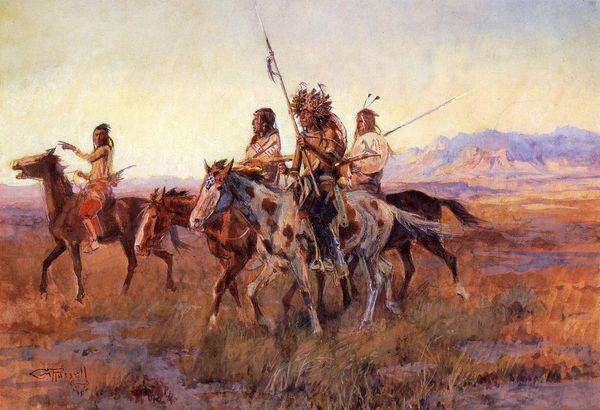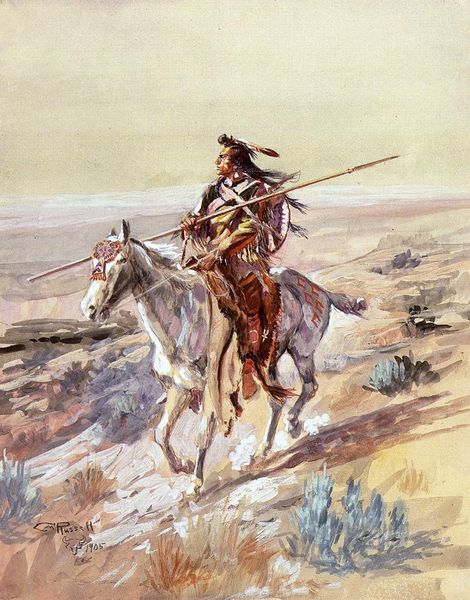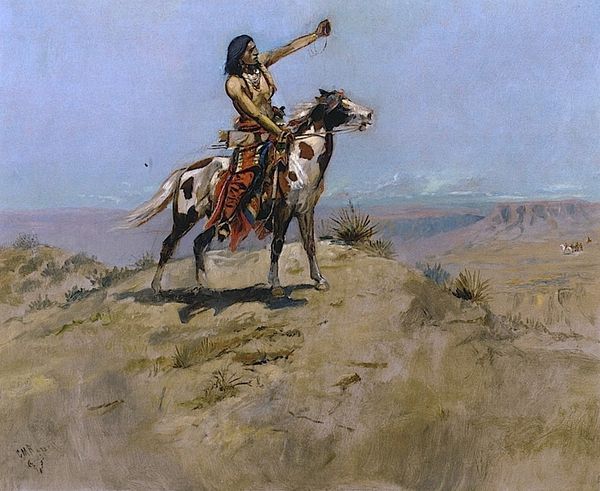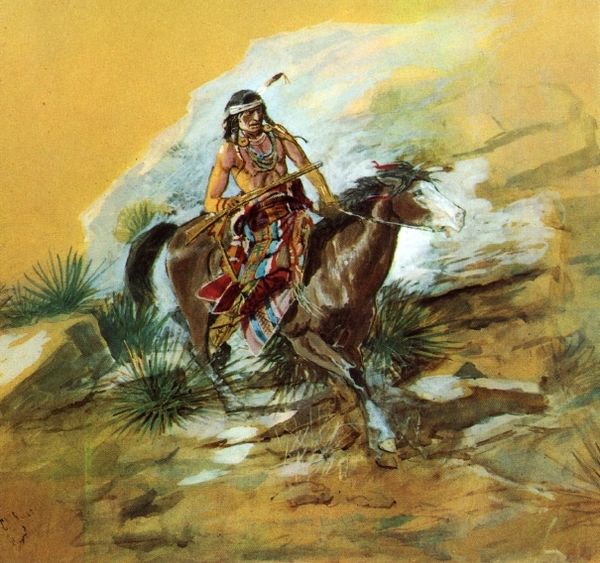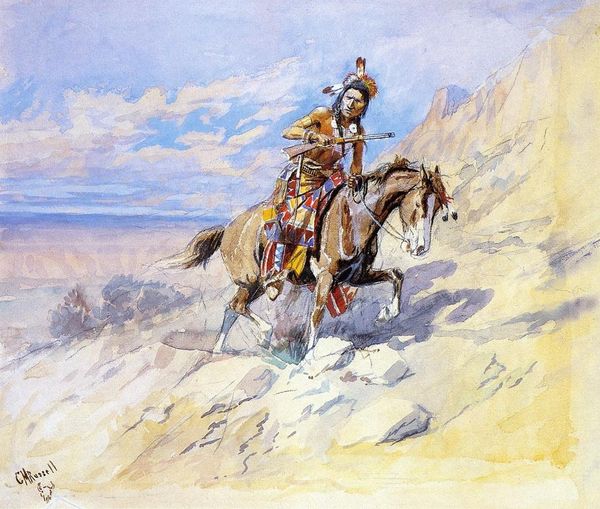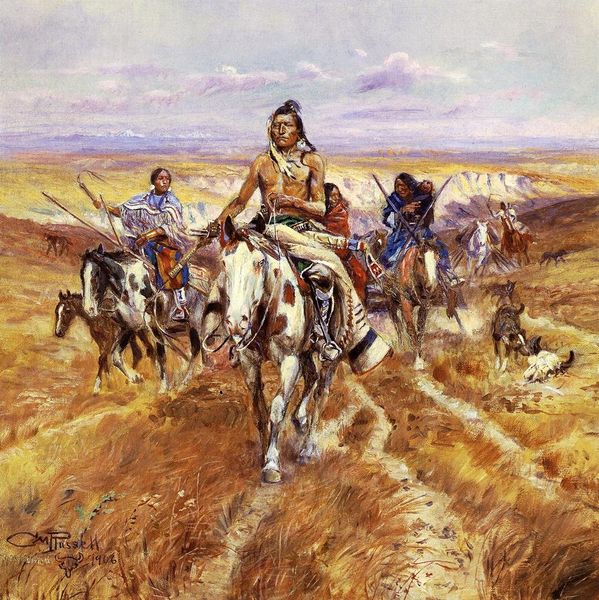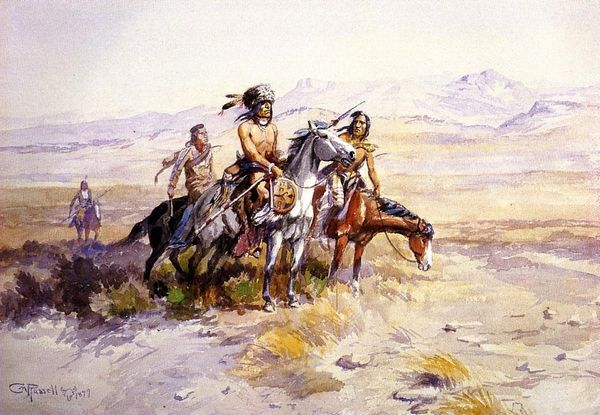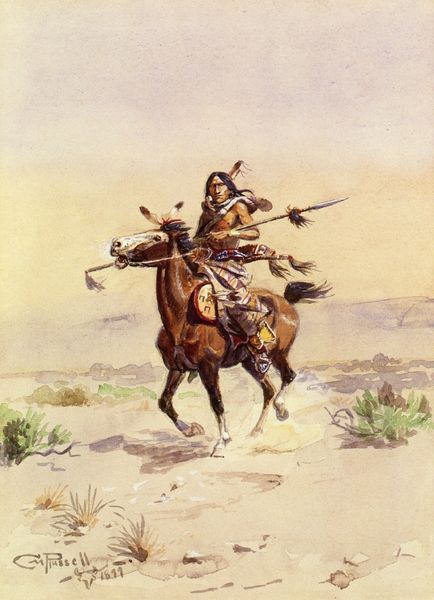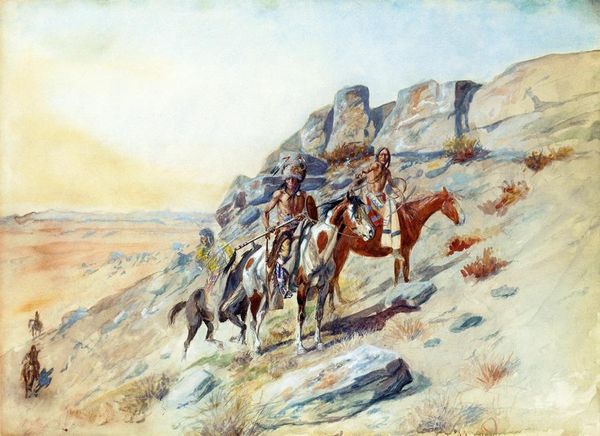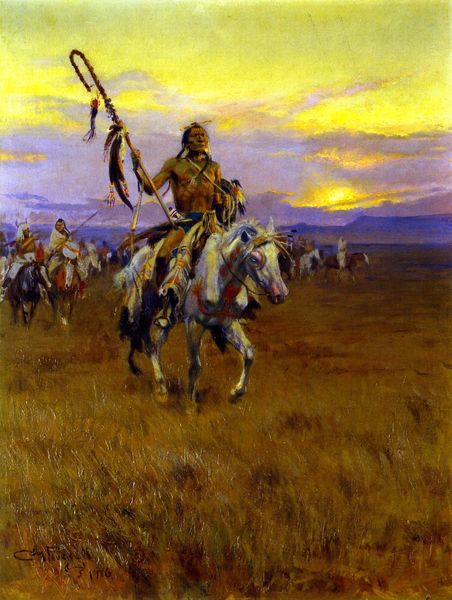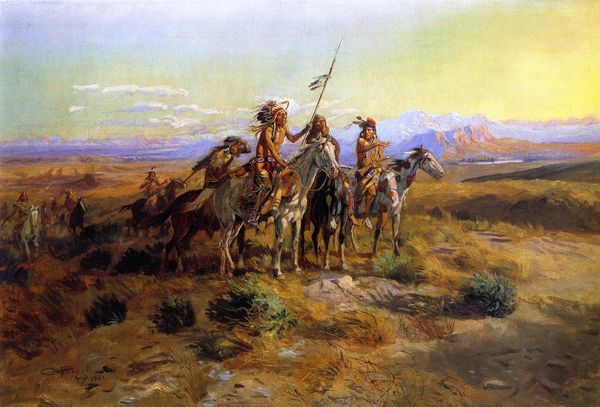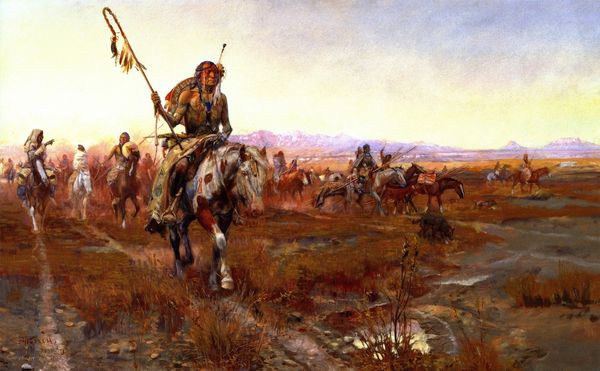
painting, oil-paint
#
painting
#
oil-paint
#
landscape
#
oil painting
#
portrait reference
#
watercolor
Copyright: Public domain
Charles M. Russell painted this image of an Indian Rider, and the image of a lone rider on horseback immediately brings to mind a sense of freedom and connection to the land. But consider the whip held loosely in the rider’s hand. It’s a tool of control, a symbol of man's dominion over nature. This symbol transcends time; we see it echoed in ancient equestrian statues and even in modern-day rodeos. The rider's adornments—feathers, beads, and perhaps tribal markings—speak of identity, heritage, and a deep-seated need to belong. Think back to ancient Egyptian art, where pharaohs were depicted with similar symbols of power. The image of the horse itself is a potent symbol, representing strength, virility, and nobility. As cultures evolve, so do their symbols, creating a rich, non-linear tapestry that connects us to our collective past. The Indian Rider invites us to reflect on the cyclical nature of symbols and how they continue to shape our understanding of ourselves.
Comments
No comments
Be the first to comment and join the conversation on the ultimate creative platform.
